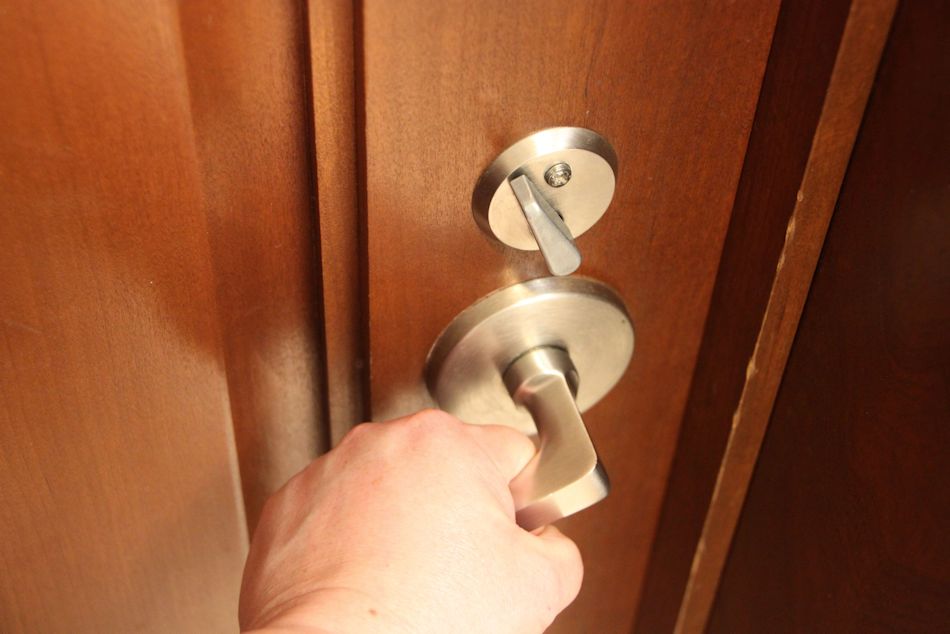When it comes to operable hardware, there are some common requirements between the model codes and the accessibility standards. All of these codes and standards require hardware that can be operated without tight grasping, pinching, or twisting of the wrist, and the required mounting height is 34-48 inches above finished floor (AFF). There is more information on the accessibility standards for operable hardware in ShortCodes 2F.
 In addition to these requirements, the model codes require hardware to be operable without a key, tool, special knowledge or effort. One exception to that is the section on key-operated locks – double-cylinder deadbolts that are allowed if certain criteria are met. The model codes also require doors to unlatch with one releasing operation that retracts all latchbolts and deadbolts simultaneously. This applies to almost all doors in a means of egress; one exception is hardware on a dwelling unit entrance door, which may include a nightlatch, deadbolt, or security chain.
In addition to these requirements, the model codes require hardware to be operable without a key, tool, special knowledge or effort. One exception to that is the section on key-operated locks – double-cylinder deadbolts that are allowed if certain criteria are met. The model codes also require doors to unlatch with one releasing operation that retracts all latchbolts and deadbolts simultaneously. This applies to almost all doors in a means of egress; one exception is hardware on a dwelling unit entrance door, which may include a nightlatch, deadbolt, or security chain.
For more information about the requirements for unlatching a door in a means of egress with one operation, read the following Decoded articles:
- Decoded: Single Operation Egress
- Decoded: Dwelling Unit and Sleeping Unit Entrance Doors
- Decoded: Key Operated Locks
- Note: This article about a recent code change will be covered in ShortCodes 4M – Courtyards, Terraces, and Roofs: Decoded: Egress From Exterior Spaces
Then proceed to the review questions below.
~~~
Review Questions
1. Which of the following applications would comply with the egress requirements of the model codes for operable hardware?
- Panic hardware with a separate deadbolt, on the emergency exit of a retail store
- A latchset with a separate access-control deadbolt, on the entrance door to an apartment
- A latchset and a surface bolt, on an individual dressing room
- A lockset and a separate indicator deadbolt, on a single restroom
2. According to NFPA 101, when is a building considered occupied?
- When the building is open for general occupancy
- When the building is open to the public
- When the building is occupied by more than 10 people
- When any of the above are true
3. In which location(s) would a key-operated lock be allowed by the IBC?
- The main entrance of a church with an occupant load of 500 people
- The main entrance of a movie theater with an occupant load of 640 people
- The main entrance of an elementary school with an occupant load of 420 people
- All of the above
Answers: 1 – B, 2 – D, 3 – A
